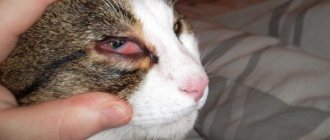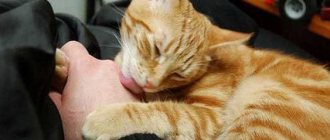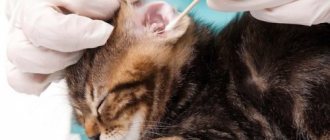Bleeding is the release of blood from the lumen of blood vessels or cavities of the heart due to a violation of the integrity of their walls. Blood can be released drop by drop, flow in a trickle, or beat in a powerful pulsating stream. The volume of blood lost can vary from a few drops to several liters. And all this will be called bleeding.
Depending on the type of damaged vessel, bleeding is distinguished between arterial, venous, capillary and mixed. Bleeding may coincide in time with the onset of exposure to a damaging factor (primary bleeding), or it may begin after several hours or even days (secondary).
If blood flows freely outward, it is called external bleeding; if it rushes into any natural cavity of the body, it is called internal bleeding. It can also forcibly make its way into the surrounding tissues, forming so-called extravasates, bruises and hemorrhages.
External bleeding is clearly visible even with minor injuries, but internal bleeding is dangerous because it is not visible.
Consult a doctor in a timely manner, determine the cause of the bleeding and provide timely assistance to the animal. The alarming symptoms characteristic of internal bleeding will help you with this.
So, internal bleeding happens:
- obvious (gastric, intestinal, pulmonary, uterine, etc.). They can be suspected when scarlet foamy blood is released when coughing, oh, liquid tarry stool, stool streaked with scarlet blood; bloody discharge from the loop, blood in the urine, and in all its portions;
- hidden , intracavitary, invisible to the eye. As a rule, characteristic external signs are shortness of breath, pallor of the mucous membranes, sudden fatigue and a rapidly increasing abdominal volume.
Why are bleeding dangerous?
The body of any animal contains a certain amount of blood: freely circulating and deposited in various organs. Any bleeding leads to the loss of some amount of blood from the bloodstream.
The animal body has a powerful mechanism for regulating and redistributing the volume of circulating blood, which allows maintaining the effective functioning of vital organs in conditions of blood loss. But everything has its limit. Minor blood losses, if they are infrequently repeated, pass without a trace for the body.
Severe bleeding due to rupture of large blood vessels (for example, carotid arteries, thoracic and abdominal aorta, vena cava) results in instant death. Damage to smaller vessels and internal organs, especially through which a large amount of blood passes every minute (spleen, liver, kidneys, lungs), also poses a great danger to the life and health of animals.
After significant blood loss, the mechanics of blood circulation are disrupted due to insufficient filling of blood vessels and the heart and a drop in blood pressure. Acute anemia develops, which is expressed in a sharp decrease in the number of red blood cells in the blood and a decrease in hemoglobin levels. As a result, the process of oxygen delivery to organs and tissues is disrupted.
Hypoxia (oxygen starvation) of tissues occurs, local metabolic processes are disrupted, cell death occurs and, as a consequence, the death of the entire organism. The maximum amount of blood loss that leads to death depends on the age, species and individual characteristics of the animal. Animals that have lost 2/3 - 3/4 of their total blood mass, as a rule, cannot be saved.
Scarlet and pink discharge
By emptying the stomach, the animal is freed from fluff, an accidentally swallowed thread, or a bead, but not every owner knows what to do when a cat vomits blood. Fresh scarlet inclusions are released when the oral mucosa is injured by bone, pieces of unchewed food, or when a tooth falls out. With prolonged fasting, reddish traces are noticeable in the bile expelled by the stomach; the cat vomits with blood of a scarlet hue:
- with a tumor in the esophagus;
- in case of organ damage;
- when the shell is corroded, which occurs after the use of drugs.
In case of intoxication, which occurs from poisoning with spoiled food, the cat vomits for a long time, and this leads to the rupture of capillaries, which color the saliva and vomit scarlet.
The pink foam that comes out of your pet’s mouth is formed when there is a strong cough that occurs during a cold or when the respiratory tract is infected.
Additional symptoms
When a cat has bleeding from the nose or mouth against the background of internal pathologies, other clinical signs are characteristic:
- gagging with bloody spots;
- impurities of blood in feces and urine, and sometimes the stool takes on a dark shade, reminiscent of tar in color;
- shortness of breath not associated with physical activity;
- high body temperature;
- bad breath;
- increased fatigue;
- pale mucous membranes;
- rapid enlargement of the abdominal cavity.
Main reasons
Bleeding due to mechanical damage
When a cat suddenly starts bleeding from the mouth, this may indicate an injury of varying severity. Domestic and street felines often damage their eyes and oral cavity with branches, sticks and other foreign objects. Also, such a violation can be a consequence of a fight with competitors or a consequence of eating bones and other solid foods. If bleeding in the mouth area is associated with mechanical damage, then pay attention to the following features shown in the table:
| Options | Description |
| Blood color | Red or pinkish |
| The color of a cat's blood coming out of its mouth depends on the degree of dilution. | |
| Duration of bleeding | With minor damage, bleeding stops after 10 minutes. |
| When the problem is caused by tooth loss, the duration is longer | |
| Character of bloody discharge | If there is a jerky discharge of fluid, you need to contact a veterinarian, as this indicates damage to a vessel or large capillary |
Experts note that in order to quickly stop the discharge of blood from the cat’s mouth, it is necessary to treat the wounds with cotton swabs with a solution of potassium permanganate.
Blood and liver pathologies
If there are no infectious reasons for such a symptom in an animal, you should pay attention to its blood.
Sudden bleeding from a cat's mouth is a consequence of serious liver diseases and abnormalities of the hematopoietic system. When clotting is impaired, destructive processes occur, as a result of which liver function is disrupted. Often, such manifestations are a sign of an exacerbation of some non-contagious disease, in which foam does not come out of the mouth. It is impossible to cope with the problem on your own, so it is recommended to urgently contact a veterinary clinic.
Bleeding in the lungs: why does it happen?
When a cat is bleeding from the mouth, you should consult a doctor and have your pet examined for the presence of pulmonary pathologies. With such diseases, the animal develops foamy discharge with pink bloody impurities. Lung disorders are characterized by a scanty amount of blood, and it does not clot. In the case of such diseases, you should not self-medicate, but it is important to urgently take the cat to the doctor so that it does not die prematurely.
Stomach problems
To stop the further development of symptoms in the animal’s digestive system, you can use ice.
If a cat is bleeding from the mouth, this is a signal of internal bleeding in the gastrointestinal tract. With this pathology, the pet often vomits bloody clots, and the disorder causes severe pain in the abdominal area. To eliminate the problem, the cat needs to be allowed to swallow several ice cubes, and a cold compress is applied to the peritoneum. A serious disorder is damage to the choroid plexuses of the esophagus, which is accompanied by the flow of scarlet or cherry blood from the cat’s mouth.
The effect of toxic components on the cat's body
Owners of kittens and adult felines need to carefully examine the discharge from the oral cavity, the nature of which can determine the disorder. When a cat starts bleeding brown from the mouth, this may be the cause of injury to the gastric mucosa. A similar condition occurs when using the following substances:
- household chemicals;
- specialized mixtures for baiting rats and other parasites.
Veterinarians focus the attention of cat owners on the fact that animals do not need to induce vomiting when poisoned by toxins. Such actions provoke damage to the esophagus and respiratory organs from poisoned vomit.
What to do if your cat is bleeding
To eliminate bleeding, you need to take into account the location of the source of blood, its quantity, duration and frequency, and additional symptoms.
Minor scratches, bruises on the ears, short-term nosebleeds, as a rule, it is not necessary to contact a veterinarian. They respond quite well to home remedies.
In many cases, nosebleeds can be controlled by restraining the cat and applying an ice pack to the bridge of the nose. At the same time, the blood vessels in this area narrow and blood stops flowing.
Small wounds and bruises need to be gently pressed to stop the bleeding. Then the affected area should be carefully washed with something like a syringe without a needle and dried. Only a clean and dry wound can be treated with disinfectants such as Betadine. Do not use hydrogen peroxide on cats as it may slow healing.
In other cases of bleeding, you should contact your veterinarian, as this may be a symptom of more serious illnesses that require treatment.
Why do blood vessels rupture?
The main cause is arterial hypertension, especially if untreated or during breaks in taking antihypertensive drugs. The vessels physically cannot withstand the pressure that blood exerts on their walls. A vessel breaks through at the site of thinning or damage, this happens in the presence of an atherosclerotic plaque, congenital aneurysms, head injuries, the use of certain medications that prevent blood clotting, tumors and encephalitis. Another important cause of rupture is arteriovenous malformations, when small arterial and venous vessels do not end in capillaries, but are intertwined into one large ball. Such congenital pathology can be detected during a preventive examination. If a person knows about it, he behaves more carefully and avoids unnecessary risks.
Nature has protected the brain as much as possible from damage, providing it with a mass of protective and backup systems. At a young age they work, but in the second half of life they don’t always work. Therefore, it is advisable that people at risk undergo an annual examination by a neurologist.
At CELT you can get advice from a neurologist.
- Initial consultation – 4,000
- Repeated consultation – 2,500
Make an appointment
The following people are at high risk of developing hemorrhagic stroke:
- hypertensive patients, they need to take medications daily;
- overweight people - the body grows approximately 1 kilometer of blood vessels per 1 kg of excess weight;
- people with high levels of cholesterol, namely low-density lipoproteins, which form atherosclerotic plaques on the vascular wall;
- people who eat insufficient amounts of protein and do not have the “building material” for complete tissue repair;
- those under chronic stress, often suffering from physical or emotional stress;
- alcohol abusers and smokers;
- those suffering from diabetes or heart disease;
- suffering from chronic infections that destroy the vascular wall - lupus erythematosus, vasculitis;
- people who constantly take medications to reduce blood viscosity;
- having direct relatives who died from cerebral hemorrhage.
When do you need to see a doctor urgently?
- External bleeding could not be stopped on its own, and the blood has been flowing or oozing for more than 15 - 20 minutes
- External bleeding has stopped, but your pet has lost a lot of blood and his condition remains severe (shortness of breath, poor mucous membranes, lethargy)
- You notice that the animal is emitting blood from a natural orifice or the stool/discharge is colored red or dark red: scarlet foamy blood when coughing, vomiting “coffee grounds”, liquid tarry stools, stools streaked with scarlet blood, bloody discharge from loops, blood in the urine, and in all its portions, blood from the nasal passages
- Blood is not released from the wound or from natural orifices, but the animal’s condition is deteriorating, shortness of breath, pale mucous membranes, lethargy are noted, or you notice a rapidly increasing volume of the abdomen
- Your pet has a very red eye or both eyes
- Hematomas (elastic, voluminous swellings) appeared under the skin on the paws (can be on the thigh, lower leg, shoulder, i.e. over the entire surface of the limb), on the outer ear, hemorrhages on the mucous membrane of the oral cavity or skin.
Fundamental Concepts
If your pet is bleeding from the mouth, examine him, paying attention to:
- structure and condition of teeth and gums;
- possible damage to the lips;
- the color of the blood and its amount;
- presence/absence of odor, vomiting;
- general condition of the body: eating pattern, level of physical activity, muscle tone, thirst or dehydration.
Deviation from the norm in a cat of some indicators indicates the development of an unidentified disease. We strongly recommend that you seek qualified assistance on the same day.
Features of treatment
Treatment of hemorrhagic stroke today is more in the purview of neurosurgeons than neurologists. The blood has already been shed, and the possibilities of medical assistance are limited. Removal of an intracerebral hematoma can save lives and maintain an acceptable level of health. Surgical removal is more successful the earlier it is performed. Optimally, the patient should be operated on on the first or, in extreme cases, on the second day after the incident.
The main intervention is aspiration (suction) of the hematoma and clipping of the aneurysm. It is only possible when the artery is in an accessible place. There is no way to help with an aneurysm deep in the medulla. In a typical case, the blood is aspirated, a clip is placed at the base of the aneurysm, and the aneurysm is isolated from the bloodstream.
Malformations are excised whenever possible. These are complex operations that require not only the skill of a specialist, but also first-class equipment.
How to help a stroke victim?
Recovery largely depends on how the people around the patient behave. First of all, you need to call an ambulance, and until it arrives, try not to move the person. You need to place a cushion or pillow under the shoulders and head, carefully turn the person on the right side, and place a basin or bag in case of vomiting. It is advisable to measure blood pressure. Anti-pressure pills should not be given before the ambulance arrives: there is a possibility of a sharp drop in blood pressure. Only specially trained medical personnel know the rules for lowering blood pressure when it rises above 150/100 mmHg. If respiratory depression occurs, you need to start resuscitation - chest compressions, mouth-to-mouth breathing.
The best prevention is timely treatment of hypertension, atherosclerosis, identification of malformations and aneurysms before they rupture.
Our neurologists see patients every day, and every patient at the clinic can find out their risk for developing a hemorrhagic stroke. Visit your doctor while you still have time.
Make an appointment through the application or by calling +7 +7 We work every day:
- Monday—Friday: 8.00—20.00
- Saturday: 8.00–18.00
- Sunday is a day off
The nearest metro and MCC stations to the clinic:
- Highway of Enthusiasts or Perovo
- Partisan
- Enthusiast Highway
Driving directions











